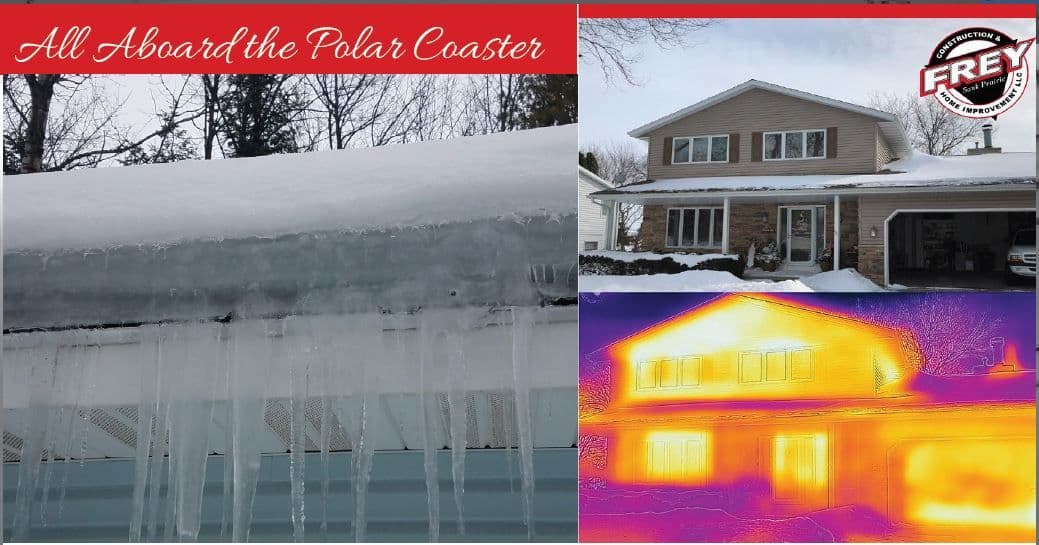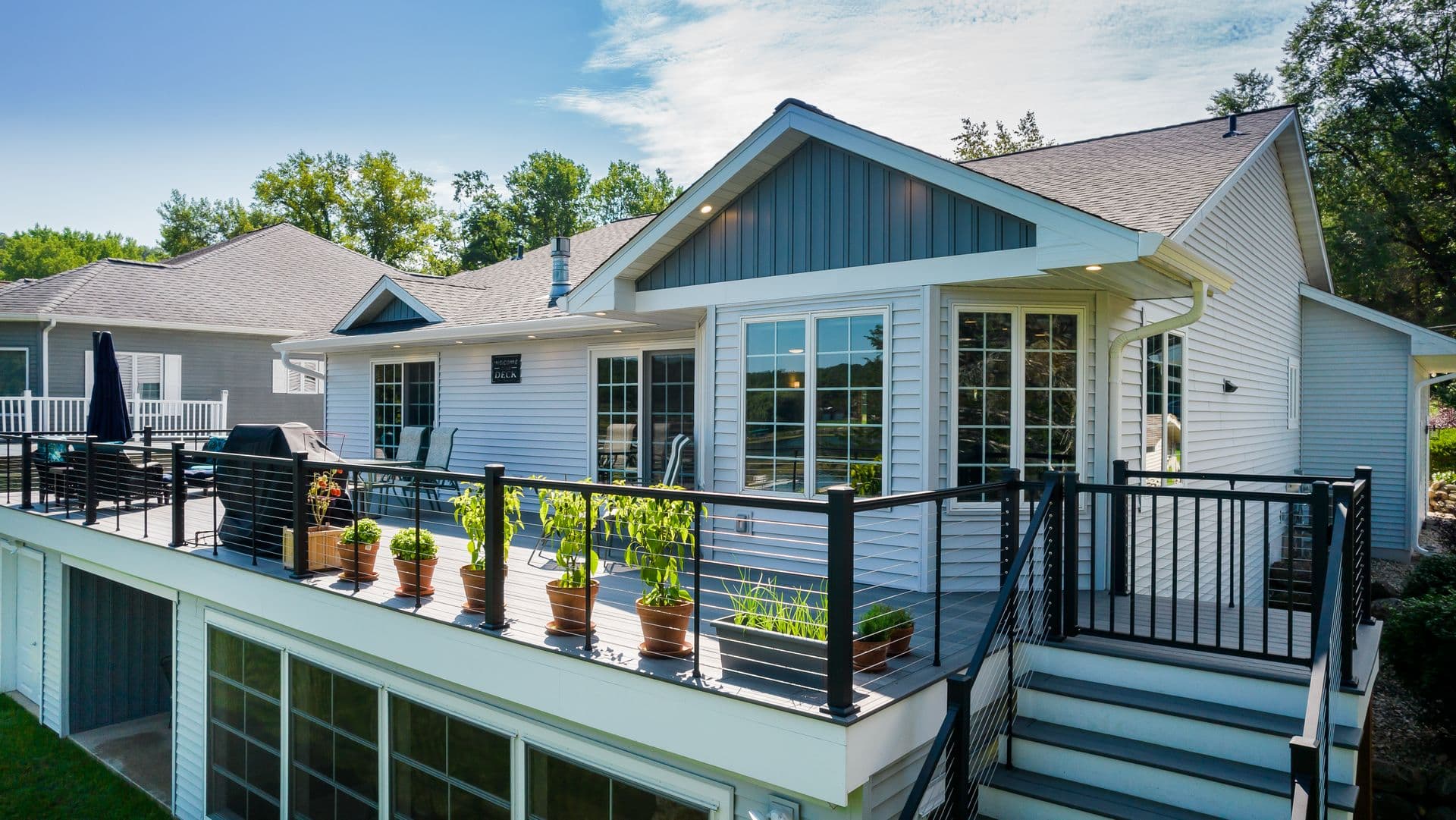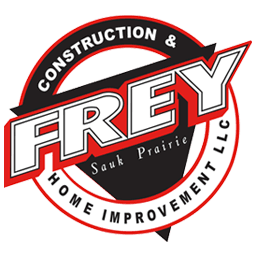Have You Heard The Farmers Almanac Is Predicting A Polar Coaster Winter

I think we’re all on board when it comes to remembering our weather last winter. Words like brutal and unrelenting come to mind. And as “un-fun” as it is to recollect the winter of 2018-19, I think it should be fresh in our minds. It’s an important reminder that winter will be upon us again before we know it. Have you heard the Farmers Almanac is predicting a ‘Polar Coaster’ winter?
Are you ready? What about your home? Very few dwellings are built for the level of energy efficiency we expect. Of course most builders will tell you the opposite. Especially when it comes to the big, steep, cut-up roof lines like we see all over the homes of our clients.
We are your roofing and insulation pros. So we see the same old story over and over: just not quite good enough. These “okay” installations don’t show their faces all the time. Fair weather? No problem. But during the weather extremes we live with we have learned that these “okay” installations are only fair weather friends...
I’m talking about more than insulation. Paired with adequate insulation is what we call “air sealing.” Like it sounds, it means sealing the voids that let warm, moist air escape into the attic. Without air sealing, snow melts prematurely, causing ice dams and creating mold. (Did you know mold comes in more colors than green?! It’s dangerous stuff!) And besides fostering some unhealthy growth, you are paying for all those btu’s that are happily escaping into the attic.
So where do you find all these voids? It’s fun and easy (just kidding). First, you crawl through the attic scuttle hole. If you’re like most home owners, you didn’t know it should be backed with rigid insulation board and finished with a bulb seal… So add that to your list (and it’s just beginning). Next, with your little white protective suit and face mask, you army crawl through the insulation.
You search out and address every void in the attic floor and walls. These are coming from the ceiling and walls below… From ceiling lights and fans, vents, wiring, wall plates, plumbing, soffits, and more. These air pathways all add to your heat loss. Especially the walls. Walls act as chimneys and naturally convect the hot and moist air up and out, where it fights with colder, dryer air and does the damage we’ve been talking about.
We don’t sell little white protective suits, facemasks, and the other gear you need to do the job. (You already knew that.) Again, we’re the pros. Let us do the work for you.
As always, our approach continues to evolve as new technologies are brought forward. For example, we recently built a new house and spray-foamed the walls and ceilings before also conventionally insulating the house. Talk about crazy efficiency for the life of the home! Also this year we removed an older home’s roof and siding, tore off the old sheeting and did the same thing. (Then we put it all back together, of course.) More crazy efficiency that isn’t crazy at all.
These examples are the extremes of energy efficiency. Hopefully they won’t be considered extreme for long... Bringing this lesson “home” means we do what we can, where we can. It means we start by plugging holes we can plug. When we do that, we reduce energy waste, big time. We do our little part to address climate change, and we save our hard earned dollars. It’s a win-win! If more and more of us get on board, I can only imagine what a better place the world would be.
Our Clients, Doug and Mary of Madison are prepared! Talk about being proactive, they chose our ultimate protection against the Wisconsin weather. Earlier this year, we removed their home's previous roof, siding and sheeting. We spray-foamed the walls before ALSO conventionally insulation the house. The home's exterior is beautiful AND smart, with a new standing seam metal roof, seamless steel siding, windows and doors, and our Absolute Gutters.
SPECIAL OFFERS
30% OFF INSULATION with any Full Roof OR Siding Project
OR
Buy 5, Get 6th Window or Door FREE!
SPECIAL OFFER
25% Off
Absolute Gutters
with Full Roofing OR Siding Project

Customer Stories
We recently had our home remodeled by the team at Frey Construction. The entire Frey team was professional, experienced, courteous and patient. The final result was exactly how we had envisioned. If we have other home remodeling projects in the future, we would certainly not hesitate to call Frey Construction again.
I am very pleased with Frey Construction. They replaced my roof and gutters. The workers were fast and efficient, and they were always courteous and professional. The office staff was patient and helpful and I appreciated all the time they spent to answer my questions. The quality of work is exceptional and they exceeded my expectations with the clean up afterwards. I highly recommend them!
Frey has done a lot of work for us and the quality is always great. My favorite thing about them is that they are extremely responsive and professional with great customer service. We've previously worked with them on siding and gutters. Most recently I had some windows replaced. They were very helpful and assisted in removing a wall-mounted shelf, which I consider an above and beyond service.





Financing Made Easy.
To help make your home remodeling project as affordable as possible, we have financing options available!

Inspiration.
Contact Us

Monday – Friday: 7am – 5pm
